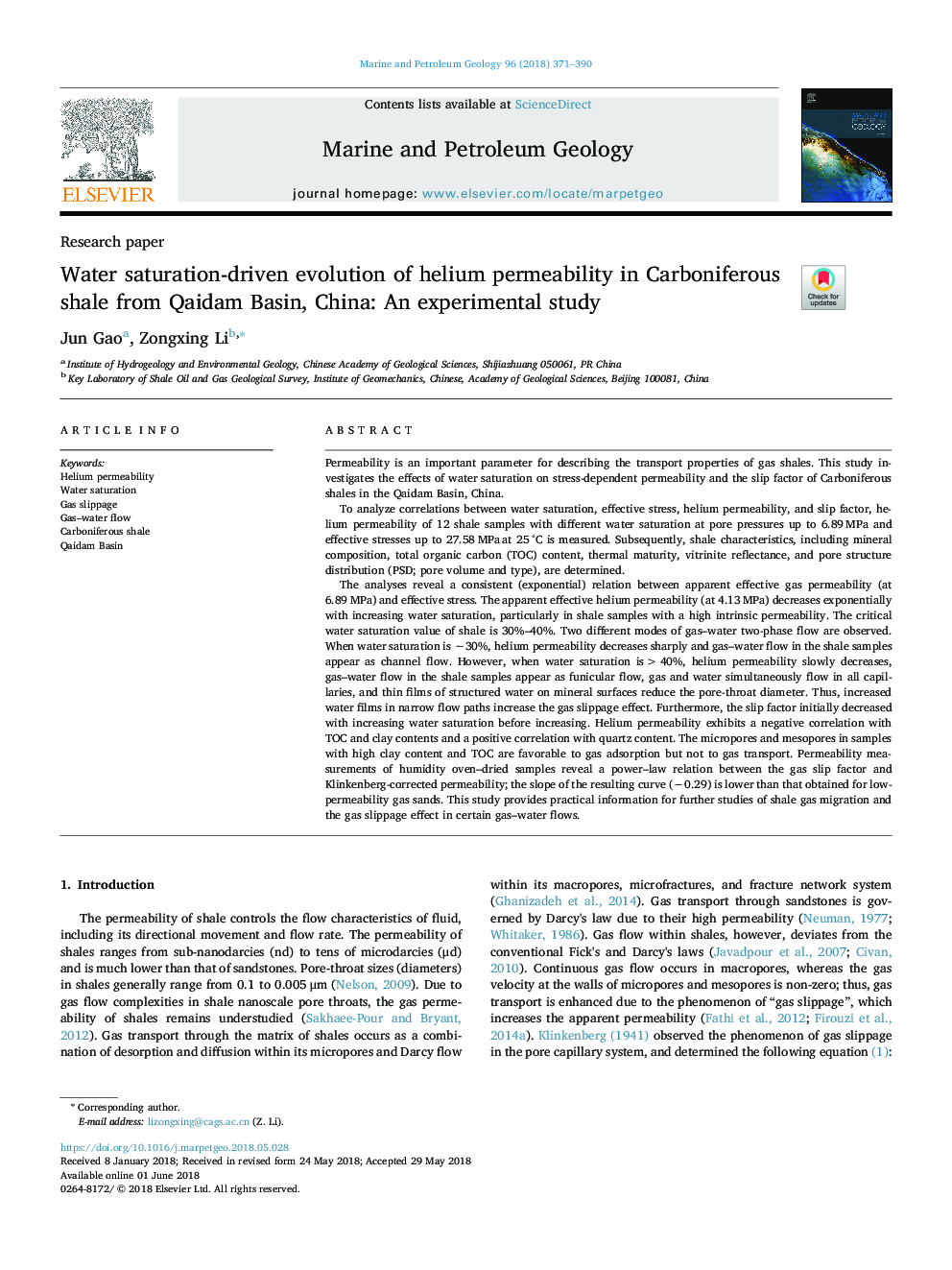| Article ID | Journal | Published Year | Pages | File Type |
|---|---|---|---|---|
| 8909004 | Marine and Petroleum Geology | 2018 | 20 Pages |
Abstract
The analyses reveal a consistent (exponential) relation between apparent effective gas permeability (at 6.89â¯MPa) and effective stress. The apparent effective helium permeability (at 4.13â¯MPa) decreases exponentially with increasing water saturation, particularly in shale samples with a high intrinsic permeability. The critical water saturation value of shale is 30%-40%. Two different modes of gas-water two-phase flow are observed. When water saturation is â¼30%, helium permeability decreases sharply and gas-water flow in the shale samples appear as channel flow. However, when water saturation is >40%, helium permeability slowly decreases, gas-water flow in the shale samples appear as funicular flow, gas and water simultaneously flow in all capillaries, and thin films of structured water on mineral surfaces reduce the pore-throat diameter. Thus, increased water films in narrow flow paths increase the gas slippage effect. Furthermore, the slip factor initially decreased with increasing water saturation before increasing. Helium permeability exhibits a negative correlation with TOC and clay contents and a positive correlation with quartz content. The micropores and mesopores in samples with high clay content and TOC are favorable to gas adsorption but not to gas transport. Permeability measurements of humidity oven-dried samples reveal a power-law relation between the gas slip factor and Klinkenberg-corrected permeability; the slope of the resulting curve (â0.29) is lower than that obtained for low-permeability gas sands. This study provides practical information for further studies of shale gas migration and the gas slippage effect in certain gas-water flows.
Related Topics
Physical Sciences and Engineering
Earth and Planetary Sciences
Economic Geology
Authors
Jun Gao, Zongxing Li,
